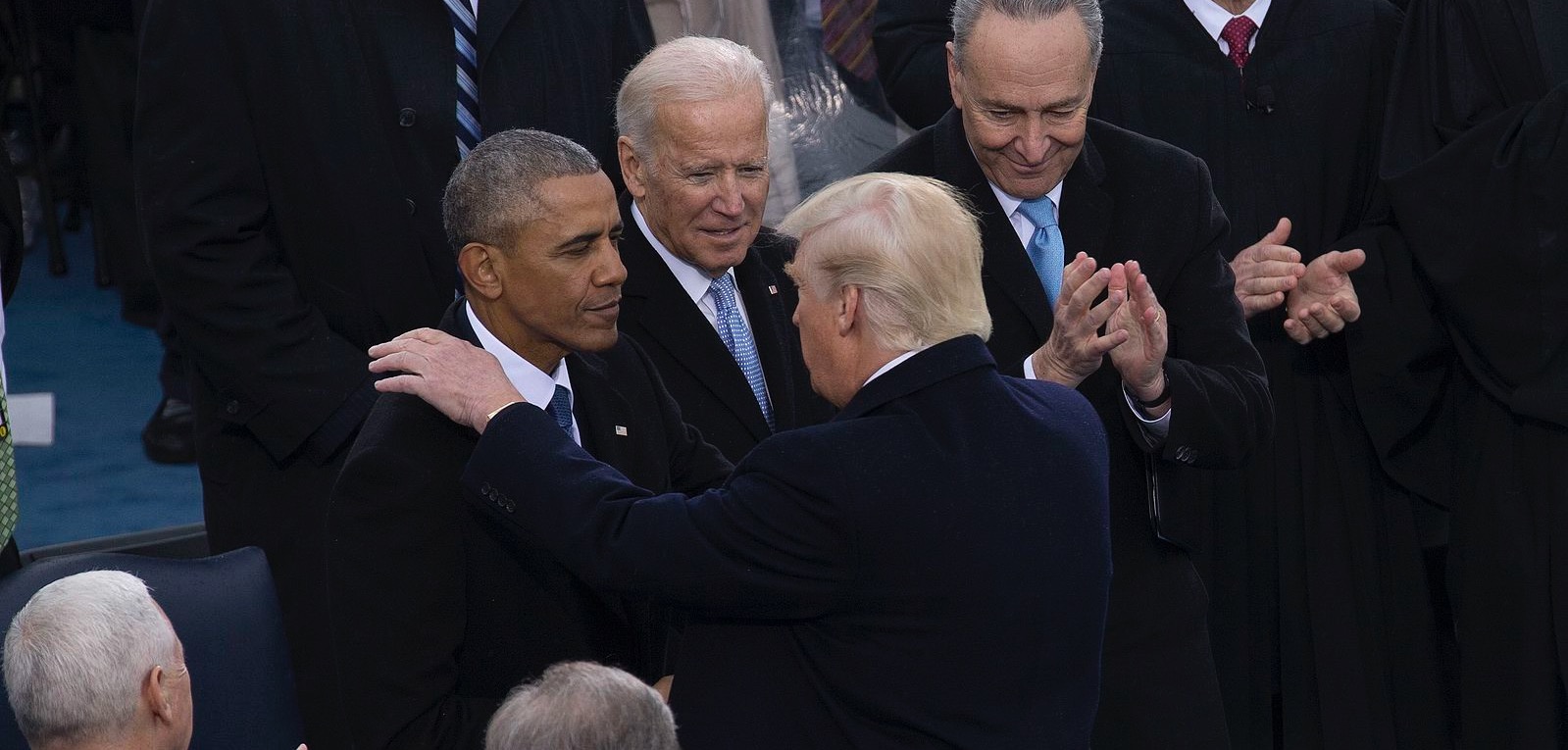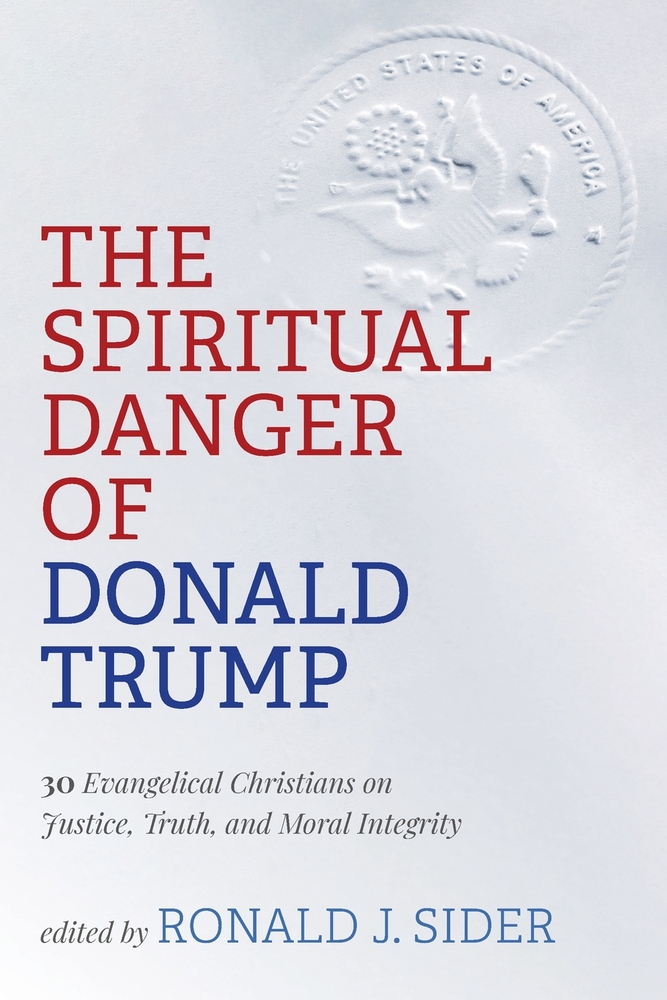Boise, ID. The conventions have concluded and so we now know that one of our major parties has nominated a septuagenarian of questionable mental stability with a long and well-documented record of lies and plagiarism who has been accused of corrupt nepotism, adultery, and sexual assault. The other major party has nominated Donald Trump.
Of course, my description of Joe Biden could be applied to President Trump, often in spades. (Though, perhaps not on the plagiarism point—Trump’s unique oratory seems to be all his own.) While American presidential politics has rarely presented citizens with a choice between angels, the trying year of 2020 seems determined to keep the blows coming. Will we re-elect a man whose winning 2016 coalition combined an enthused base of the aggrieved, who were excited about who Trump was, with more resigned voters acting based on who he was not? Or will we, after four trying years of tweets and Sharpies, vote in a career politician who has largely campaigned from his basement on the undeniable platform of not being Donald Trump? Other options exist as well, but none that, based on history, come with an actual chance of winning.
One recently offered tool for the discernment process is The Spiritual Danger of Donald Trump: 30 Evangelical Christians on Justice, Truth, and Moral Integrity. This mid-sized volume of “beware Trump” essays is edited by Ronald Sider, who has been active at the intersection of religion and politics ever since Evangelicals for McGovern was founded in his living room.
There is indeed much about Trump of which Christians should be wary. Marked by hedonism and narcissism, Trump in many ways sounds like one of the people about whom Paul warned Timothy: “Have nothing to do with them” (II Timothy 3:5). The book’s contributors, who range from “never Trump” stalwarts on the right like Pete Wehner to religious leftists like Randall Balmer, lay out the President’s flaws with layers of quotations that leave little room for debate.
Unfortunately, as I found out, there was also no room for debating whether, in spite of Trump’s many problems, one should still vote for him given the alternatives. Despite being associated with the project prior to the addition of Sider as editor, my chapter ultimately went unpublished because it too forcefully highlighted the Democratic Party’s own moral problems on the issues of abortion and human sexuality. (A modified version of my chapter was later published here at Front Porch Republic.)
To my eyes, this episode encapsulates the largest flaw in Sider’s long career. Through his influential book Rich Christians in an Age of Hunger and his organization Evangelicals for Social Action, Sider has rightly reminded evangelicals to care for the poor and take other important issue of social justice seriously. Yet, on what for many has been the premier social justice issue of the era, Sider’s has regularly critiqued Democrats over abortion but not in a way that might actually give his readers great pause in voting for them. Abortion becomes just one of many seemingly interchangeable “pro-life” issues. Simply call “health care for all” a “central part of any biblically informed pro-life agenda,” as Sider does in the book, and the Republicans’ pro-life advantage is rhetorically neutralized.
To his credit, Sider’s drift on the issues of abortion and marriage has not been as pronounced as another old lion of the left, Sojourners founder Jim Wallis. (Wallis offers an endorsement blurb for the book.) Nevertheless, one of the spiritual dangers of Trump is that he can come to be seen as the only danger. Such “the enemy of my enemy is my friend” logic then leads to the temptation to overlook the problems posed by the other side. That was at play in the making of this book.
In February 2020 when Sider entered the scene as the primary editor, psychologist and author Chris Thurman, the initiator of the effort and one who was originally expected to be listed as one of the co-editors, alerted the contributors to changes. “After Ron came on board,” Thurman wrote, “the focus in the book went from ‘say whatever is on your heart about Trump and his supporters’ to ‘we need to write chapters that persuasively reason with Christians to not vote for Trump so he doesn’t get re-elected.’”
That was a bridge too far for me, and I offered to withdraw from the project. Sider, though, asked to see my draft and assured me that “yes, there is definitely room for the ‘Trump conflicted’ writer!” It then seemed there was. After only some light edits and minor requests for clarifications, my piece was accepted. Sider called it “challenging and very well written.” Footnotes were finalized, and I thought the matter was complete.
Nevertheless, Dr. Bandy Lee, who had spearheaded The Dangerous Case of Donald Trump, a volume featuring mental health professionals assessing the President, intervened. Lee was then a co-editor on the evangelical book effort, and she announced that she “would take over from here.” Lee requested my chapter stop at the point it began to explore the Democratic downsides of abortion and LGBT issues in depth. A spirited exchange and re-writes followed.
Lee eventually removed herself as an editor on the project completely (though she did contribute the book’s prologue). Sider, however, still insisted on stripping any reference to the possibility of reluctantly voting for Trump “as the best of the bad options,” and axed my assertion that opposition to Trump was helping to “radicalize the left.” He also demanded changes that I thought were diluting my concerns about social issues.
Sider took exceptional umbrage to the following: “Sadly, the Democrats’ only absolutes today are a disdain of Trump and devotion to a radical autonomy characterized by unlimited access to abortion and an ever-expanding alphabet soup of LGBT+ rights.” Sider never provided any additional absolutes to contradict my claim. Certainly, one could find some platitudes like “racism is bad” upon which virtually all Democrats could agree, but I still struggle to identify a nationally contested issue about which the party stifles dissent to the extent that it does with gay-marriage and, especially, abortion.
Whether one “Defunds the Police” or provides “Medicare for All” is open to public debate. Whether the party of the little guy has any space in its platform for pro-lifers is not. Allow me my pipe-dream that Louisiana Governor John Bel Edwards might run for the White House in 2024 and change that, but in 2020 the issue is off the table. This year, the small but feisty group Democrats for Life sought a return to the more neutral (though far from life-affirming) platform language from 2000. Edwards headlined a list of politicians in support. Sider’s name was absent from a parallel list of faith leaders, though he did express support later. These efforts were, unsurprisingly, rebuffed out of hand by the Democrats in charge. The official platform instead calls for publicly funded abortions, a position that nominee Biden long opposed until he flipped while campaigning for the White House in 2019.
Sider eventually offered me the following take it or leave it language: “Neither political party today reflects the full range of important stances urged by the National Association of Evangelicals’ public policy document, ‘For the Health of the Nation.’ And opposition to abortion is one of those important issues.” I decided to leave it.
“For the Health of the Nation” is a worthwhile document (at least in the original 2004 form with which I am familiar) and it presents an agenda on topics ranging from the sanctity of life to creation care with which I find little fault. Nevertheless, this public policy summary does not serve as a clear guide for the situation we face today where one major party better aligns with part of the agenda and the other with different parts. Nor does it provide a clear roadmap for assessing issues of personal character and competence that are important when choosing a leader. To be sure, “For the Health of the Nation” is a useful resource, but it is not a “who to vote for” flow-chart.
Sider himself focused on the NAE’s booklet in one of the four sections he penned (an introduction, two essays, and an afterword). Sider highlights the NAE’s call for a “biblically balanced agenda” and concludes that “‘one-issue’ voting contradicts” this. Elsewhere, Sider makes clear that by “one-issue voting” he is talking about abortion. He favorably quotes a person who called voting for Trump based on his abortion policies a “Faustian deal.” Sider also highlights Mercer University ethicist David Gushee’s assertion that an “evangelical center” has emerged and, in Sider’s words, has “rejected a narrow focus primarily on just abortion and marriage.” Sider makes clear that he personally will “explicitly condemn Donald Trump and urge . . . people not to vote for him.”
The NAE’s call for biblical balancing is one that I echo. I was simply hoping to make the point that abortion is an especially large weight to throw onto the scales. Approximately 60 million preborn persons have been legally killed in America since Roe v. Wade. That approaches the worldwide death count from World War II. And while I do not advocate this, some people explicitly or implicitly reduce the value of the preborn through the use of euphemisms such as “potential person” or “fetus” or “products of conception.” Nevertheless, even if each small child were discounted down to only 10% of a born person, then this roughly equates to the number of Jews killed by the Nazis. At only 1% of a born person, the carnage nearly approximates the Rwandan genocide. If tallied at only 0.01% of a person, the total is still almost double the number killed by terrorists on 9/11/2001.
In short, if a person gives any value to the preborn, as Sider consistently has done in his writing, then the implications become substantial when actually calculated. The pervasiveness and enormity of the evil matters. By quantifying it becomes more difficult to simply trade off abortion with other real, if less deadly, sins of the Republicans.
While Sider at length details the COVID-19 death toll—which stood at what now sounds like a paltry 14,865 as he wrote in April—and the erratic federal leadership contributing to it, he never undertakes a similar exercise with unborn lives. Today, almost 200,000 Americans have perished from the coronavirus despite the best efforts of medical professionals to save them. In contrast, if Biden has his way, we will soon return to the days when doctors actively extinguished young lives on the taxpayer’s dime. During the 1970s, before the Hyde Amendment, the federal government funded some 300,000 abortions annually. In short, Sider embraces the rhetoric of balancing but avoids the uncomfortable work of actually doing it.
Setting aside the drama surrounding my submission and the deeper issues it reveals, the finished collection is worth your time. While the book’s proponents never landed many of the big fish contributors for whom they hoped, still present are thoughtful voices worth hearing.
Baylor sociologist George Yancey places Trump’s rise within a world of growing “Christianophobia” and worries that, despite short term gains, Trump could fundamentally turn the culture even more against the Church. “If Christians do not push back on the disturbing attributes of Trump,” warns Yancey, “then we will own those attributes.” Yale’s Miroslav Volf and Ryan McAnnally-Linz, in their essay “Christ the Center and Norm,” pull back theologically to remind us that “[t]o hope is to live into the reality of the kingdom that we hope for.” They urge Christians to set aside the myth of achieving ultimate progress through politics, while still challenging believers to reflect the kingdom as best we can through political means.
While too many of the pieces are repetitive litanies of Trump’s many sins, multiple writers, including attorney and evangelist Irene Fowler of Nigeria, provide helpful perspectives from abroad rooted in our common scriptures. Several other authors, including Center for Public Justice founder James W. Skillen and his son, James R. Skillen, an environmental studies professor, offer historical context.
The Skillens review the competing visions of the American founding that influence black and white visions of Trump today. Moving closer to the present, Messiah College history professor John Fea contrasts the faith-based hope of the civil rights movement to the fear that is driving some white Christians to Trump. Stephen Haynes, a religious studies professor at Rhodes College, examines the use and abuse of Dietrich Bonheoffer’s legacy in the culture wars and Eric Metaxas’s defense of Trump.
Randall Balmer, the Dartmouth religious historian, declares—in full bombastic Balmeresque fashion—that “evangelicalism died on November 8, 2016.” Despite the hyperbole, he provides a useful look at the evolution of evangelicalism from a reform-minded movement often opposed to slavery and skeptical of capitalism to the present-day enablers of Trump. Long a critic of the religious right, Balmer also seeks to erase what he calls “the abortion myth” surrounding the movement’s origins. While correct that leaders like Jerry Falwell, Sr. first sought to defend private schools that were labeled by some as “segregation academies,” Balmer wrongly implies that the later and more lasting devotion to the pro-life cause was somehow fraudulent.
Along his historical trek, Balmer quotes an unnamed evangelical writer from Virginia who called slavery “the greatest political evil” in the nation but could not bring himself to support its abolition. Reducing the negative impacts of slavery in the present through education, with the possibility of a later relocation back to Africa, sufficed as an adequate remedy. Suggesting more, it seems, might have implied that slaves were fully human.
This was the nineteenth century equivalent of Bill Clinton’s “safe, legal, and rare” formulation that still attracts Sider and others on the evangelical left. Their political allies among the Democrats have largely moved on to “Abortion on Demand and Without Apology” as a slogan. Yet, just as with Southern evangelicals over a century and a half ago, it remains easier in that subculture to simply offer half-measures than to face the full awful reality.
Ironically, the author that Sider positioned first in the book started to look squarely at the issue of abortion before averting his gaze. Shortly before retiring from his duties at the magazine, Mark Galli called for Trump’s removal from office in an attention-getting Christianity Today editorial. Here, Galli opens his essay by expressing his admiration for a pro-life student activist who spoke at an “Evangelicals for Trump” rally after campus administrators had tried to block her efforts. He paraphrases the response of Trump’s backers to such injustices this way: “‘When the lives of hundreds of thousands of babies in the womb are at stake,’ they say, ‘why make such a big deal about the president’s bad manners?’”
Indeed, that is the crux of the matter for many. Galli goes on to make a compelling case “Why ‘Mere’ Words Matter.” But he never circles back to argue why the babies might matter too. The closest Galli comes is to state: “I can still imagine an argument that justifies a vote for Mr. Trump, especially given alternatives.” Galli never makes that argument out loud, though, and Sider ensured that no one else would either.
The Spiritual Danger of Donald Trump includes many excellent essays and may help voters in the present as they ponder their presidential options. More likely, though, it will primarily serve as a library time-capsule demonstrating that at least some evangelicals were deeply troubled by our 45th president. That was a cause I was willing to join, but not at the expense of downplaying the deeply troubling shift to hyper-autonomy that Democrats have embraced in the realm of sexuality and reproduction. In his afterword, Sider urges Christians to “resolve to try to listen to and understand the reasons that other Christians give for their different political conclusions.” Unfortunately, in the case of this volume, there were some things that Sider himself did not want to hear.







